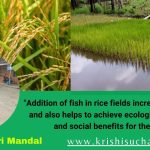Prospect of Seed production and supply in Nepal

Seed Production and Supply in Nepal
Nepal is facing similar problems as many developing countries regarding its agricultural development: low agricultural productivity, lack of easy access to inputs, low mechanization, old agricultural technologies, high rates of economic migration of men (and thus feminization’s of Agricultural production) and an inadequate enabling policy environment are some of the major constraints to agricultural production.
Further, low uptake of improved Plant varieties and low access and availability of improved and quality seed limit improvements in crop production. These factors, the increasing population as well as the high sensitivity to climate risks largely contribute to Nepal’s position as one of the most food-insecure countries in Asia and one of the poorest countries in the world.
Seed system is one of the most vital components of agricultural system that serves as an important element in strategies for agricultural development, biodiversity conservation and poverty reduction. Seed security is a prerequisite for food security of small-holder farmers. A strong and effective research and support system is essential to develop and rapidly deploy quality seeds of a wide range of competent choice varieties to farmers.
Nepal has formulated 17 policy instruments (including draft bills) since 1988 when the first Seed Act came into effect. Of these, 16 are either on plant genetic resources for food and agriculture, or on seed or related to overall agriculture development in Nepal.
There are not any policy instruments which may be hindering or undermining farmers’ seed systems. Policy and practices both have been mostly supportive or at least neutral to informal seed systems and as a result Nepalese seed systems enjoy great flexibility.
However inappropriate polices developed fails to create intended changes in the seed systems.
Recently production and supply of seeds is increasing in formal sector in Nepal with a surge of community based and contract seed production led by community groups and private seed companies respectively.
The role of private sector is evolving and emerging rapidly with its higher share in the production of commercial seeds and making availability of hybrid varieties in rice, maize and vegetables. The public sector is dominating in supply of varieties and seeds of OPVs including source seed production and supply of major food crops (rice, wheat, maize).
Public sector is still a major player for agricultural research and provision of source seeds and support services (subsidies, extension services etc.) including quality assurance services in the country.
Despite these positive outlook and initiatives, presently the available options for quality seeds of new competent farmer preferred varieties are limited at the farm level. Available seed varieties supplied in the market, adopted and used by farmers in major food crops are very old that were mostly released during 1990s.
Furthermore, the source seeds produced by public research stations and farms are not adequately linked to seed multiplication and marketing chains of the private sectors to multiply and market subsequent cycle of certified and improved seeds.
The current research and extension services and public support measures are also inadequate, poorly targeted and ineffective in meeting the quality seed needs of choice varieties to the farmers.
Private sector participation and investment in varietal research and development is also limited to meet the diverse seed needs of farmers and stakeholders.
Despite numerous efforts to improve the seed systems in Nepal, the country is still facing many challenges in its seed sector development.
Policies and legislations in Nepal were developed without rigorous analysis of the overall socioeconomic landscape, agricultural situation and livelihood strategies including migration. Political instability (for over two decades) is equally to be blamed for adding up inappropriate policy instruments, in particular strategies and visions were changed too frequently.
In the case of Nepal, the timely and sufficient supply of quality seed of high yielding varieties has the potential to increase crop yields by about 15-25%.
Decentralized production of source seeds and maintenance of varieties in different domains and locations by strengthening private sector’s capacity in source seed production and marketing can reduce mis-match in demand and supply and enhance efficiency in production and supply of quality seeds of improved varieties.
Similarly, increase availability of competitive varieties and breeding materials through fast track development of crop varieties, development of incentives and legal mechanism for variety development and devolution of source seed production may help improve private sector investment in R & D.
In this context, strategic efforts and action plans are needed to promote investment in R &D for development and delivery of competent farmer preferred varieties and hybrids.
Promoting the development of a strong, dynamic and sustainable seed sector in Nepal will require adoption of public-private partnership in R &D with a coordinated effort between the public and private sectors, where the roles of public and private sector may differ across crops, value chains, production systems and stage of seed industry development.
The partnership modality needs to consider the current context and future development that requires use of integrated seed system linking both formal and informal system and use of market and non-market channels.
The public sector needs to invest more in plant breeding, varietal maintenance and production of early generation seeds (breeder seed), particularly for open-pollinated varieties of self-pollinated food crops, while private sector research and investment are to focus on hybrids and high value crops that are more efficiently carried out by private sectors.
Effort to improve the analytical capability of public as well as private sector stakeholders will have high returns from agriculture sector in the country.
This will require quality improvement in seed production and supply in informal seed systems and diversification of sources of seed supply in formal seed systems, as well as fostering sustained linkages between them.
Writer: Shikhar Thapa (Student, Bsc Ag, IAAS, TU)

 एउटा यस्तो विषालु भ्यागुता, जसको मुल्य नै पर्छ ३ लाख, जान्नुहाेस्
एउटा यस्तो विषालु भ्यागुता, जसको मुल्य नै पर्छ ३ लाख, जान्नुहाेस्  भोलि र पर्सि बालबालिकालाई भिटामिन ए खुवाइदै
भोलि र पर्सि बालबालिकालाई भिटामिन ए खुवाइदै  खगराज अधिकारी गण्डकीको मुख्यमन्त्री नियुक्त
खगराज अधिकारी गण्डकीको मुख्यमन्त्री नियुक्त  सुनसरीमा दुवै पक्षबीच सहमति, कर्फ्यु खुकुलो हुदै
सुनसरीमा दुवै पक्षबीच सहमति, कर्फ्यु खुकुलो हुदै  स्टेफेनको शतकमा आयरल्याण्ड वोल्भ्सले नेपाल ए लाई दियो २८५ रनको लक्ष्य
स्टेफेनको शतकमा आयरल्याण्ड वोल्भ्सले नेपाल ए लाई दियो २८५ रनको लक्ष्य 


